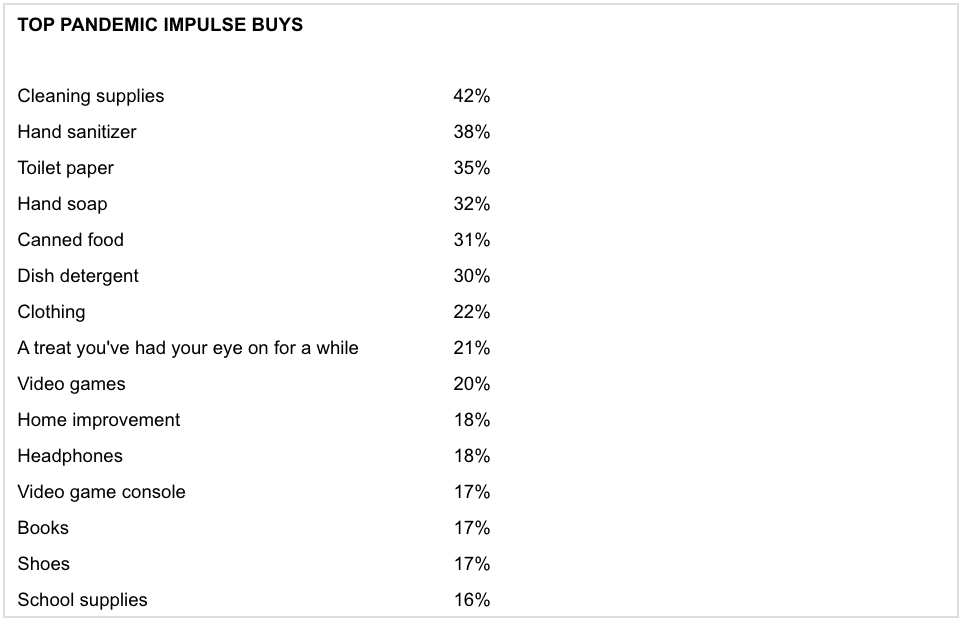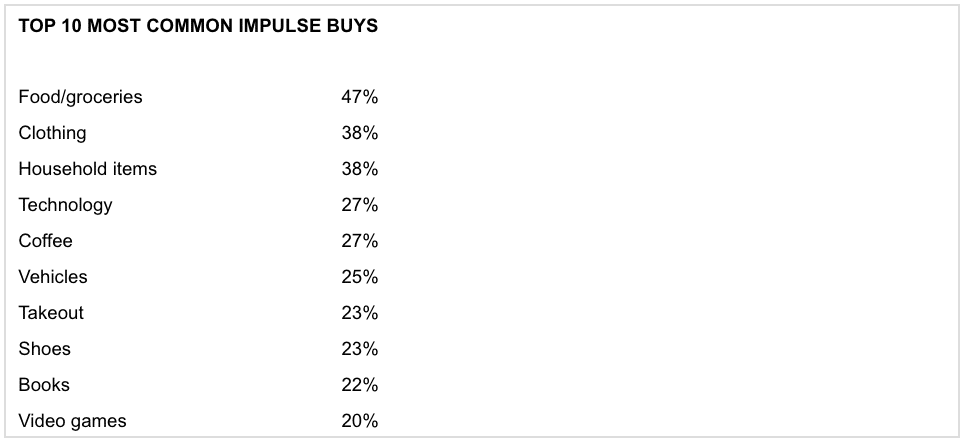New research from crowdsourced shopping platform Slickdeals found that the COVID-19 pandemic has consumers shopping more impulsively than prior to the pandemic.
In January of 2020, before the pandemic, the average American was found to spend $155.03 monthly on impulse buys. In a new poll in April, during the pandemic, that number jumped up 18 percent to $182.98. Both polls of 2,000 Americans were commissioned by Slickdeals and conducted by OnePoll.
According to the respondents, nearly three in four (72 percent) said that buying something impulsively during the pandemic has positively affected their mood.
What are we buying?
The top item Americans have bought impulsively during the pandemic was found to be cleaning supplies, followed closely by hand sanitizer and toilet paper. However, consumers also report impulsively buying other goods, with nearly one in four saying they’ve bought themselves a treat that they’ve had their eye on for a while. Nearly one in five have impulsively purchased a new video game console, with 22 percent purchasing clothing and 18 percent spending on home improvement.
In fact, impulse spending does not mean just buying random, unneeded items. According to the results, more than half of Americans polled credit impulse buying with actually saving them money in the long run. When impulsively shopping, 52 percent of respondents said they typically take advantage of a deal rather than buying at retail price.

“In these uncertain times, consumers are looking to stretch their dollars even further, and impulse purchasing can actually serve as a tool to do so,” said Slickdeals CEO Josh Meyers, in a news release. “While someone may not plan to buy laundry detergent or groceries on a given day, stocking up on these everyday items when there’s a great deal available can help your budget. As such, impulse spending can be associated with saving money in the long-run as opposed to being wasteful.”
Who are we buying for?
While the majority of impulse buys tend to be for oneself, getting things for their children was also a top response, with gifts for friends and their partner scoring high marks as well. Nearly one in five say they impulse spend on their pet.
Since the pandemic began, 46 percent say they’ve ordered online groceries for the first time, with 47 percent trying a new streaming service and 35 percent being a first-time customer with a restaurant delivery app.

Nearly three in four (71 percent) say that they plan to continue the increased rate of online shopping even after the stay-at-home order is lifted for them.
“At Slickdeals, we’ve assembled the largest community of super savvy shoppers and we’ve created a platform for them to share timely information about finding the best deals, on the best products, at optimal times throughout the year,” added Meyers. “More than ever, the Slickdeals community is working together to identify the best prices, tips and even hard-to-find inventory to better cope with the rapidly changing world in which we now find ourselves.”

New survey reveals impulse spending increased by 18 percent during the COVID-19 pandemic








